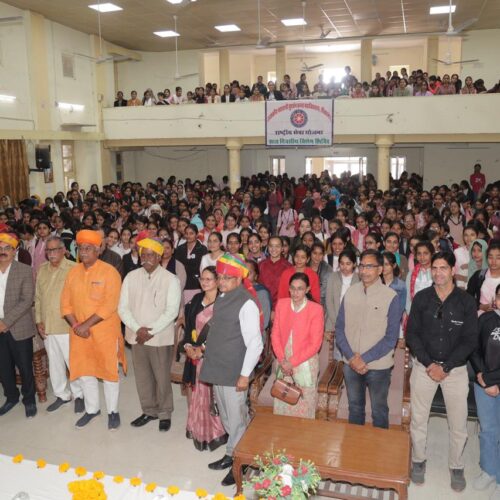By Defence Journalist Sahil
Civil Defence Mock Drills Across Border States Signal New Deterrence Doctrine Post Operation Sindoor
India is entering a new strategic phase marked by readiness, deterrence, and bold retaliation. On Thursday evening, civil defence mock drills will be carried out in border districts of Gujarat, Punjab, Rajasthan, and Jammu and Kashmir — just days after India executed Operation Sindoor, a high-impact military operation targeting terror infrastructure deep inside Pakistan.
This coordinated mock drill — the second such exercise in a month — follows the landmark May 7 drill that preceded Operation Sindoor. For the first time since the 1971 war, India launched a full-spectrum civil defence rehearsal on such a massive scale. What followed that night was even more historic: coordinated Indian Air Force strikes that devastated key terrorist hubs and Pakistan’s military installations.
Mock Drills: A Psychological and Tactical Shift
Officials familiar with the planning told this correspondent that Thursday’s civil defence drill is not a routine exercise but a component of India’s new war-preparedness doctrine. It serves multiple purposes:
- Civil Awareness: Familiarising border populations with emergency response protocols.
- Strategic Signalling: Reassuring Indian citizens while sending a clear message to adversaries.
- Operational Readiness: Coordinating local civil administration, disaster relief authorities, and military infrastructure in a near-war simulation.
In locations like Barmer (Rajasthan), Amritsar (Punjab), Kutch (Gujarat), and Samba (J&K), sirens will be tested, bunkers inspected, evacuation drills rehearsed, and air defence alerts simulated.
Operation Sindoor: Objectives Achieved
On May 7, India changed the game. Operation Sindoor, as it came to be known, hit Pakistan not only militarily, but also politically and psychologically.
Military Objectives:
According to top defence sources, India successfully neutralised terror camps in Bahawalpur, Muridke, and Muzaffarabad. These areas had long been known to host elements of Jaish-e-Mohammed, Lashkar-e-Taiba, and Hizbul Mujahideen.
Air Marshal A.K. Bharti, DG Air Operations, later revealed that India also struck Pakistani airbases — including Sargodha, Skardu, Bholari, Jacobabad, Sukkur, and Rahim Yar Khan. Satellite images revealed extensive damage to hangars, runways, and aircraft shelters.
Political Objectives:
India suspended the Indus Waters Treaty, a move Prime Minister Narendra Modi declared would remain in force until Pakistan dismantles its terror infrastructure. This decision was communicated to world leaders including US President Donald Trump and US Senator Marco Rubio.
Psychological Objectives:
From New Delhi to Washington and Riyadh, the message was unambiguous: “No place is safe for terrorists anymore.” Pakistan can no longer hide behind nuclear deterrence to protect terror groups operating from its soil. The attack was India’s assertion of strategic depth — a warning that punitive strikes will now follow any attack on Indian civilians or security forces.
Mock Drill Aftershocks: Pakistan on the Back Foot
In the wake of Operation Sindoor, Pakistan launched a face-saving operation titled Operation Bunyan, which was widely ridiculed after it was discovered the country had used AI-generated and photoshopped images of damage inside India — a claim India and international agencies debunked instantly.
Asaduddin Owaisi, responding to this blunder, remarked sarcastically, “Nakal karne ke liye bhi akal chahiye.”
Meanwhile, reports indicate that Pakistan has placed several forward airbases on high alert. Intelligence inputs suggest ISI handlers have been instructed to go underground, fearing further Indian strikes.
A New Normal in India-Pakistan Equations
Sources in South Block confirm that Operation Sindoor marks a paradigm shift in India’s counter-terror doctrine. While the 2016 surgical strikes and 2019 Balakot airstrikes were bold steps, Operation Sindoor was wider in scope, deeper in penetration, and more devastating in effect.
The mock drills indicate India’s policy of keeping both civilians and the armed forces on high alert. “We’re no longer in the era of post-attack diplomacy. Now it’s pre-emptive defence and proactive retaliation,” a top military strategist told this correspondent.
Conclusion
The upcoming civil defence drills are more than routine rehearsals. They reflect India’s transformation into a nation ready to confront asymmetric warfare with full-spectrum responses — diplomatic, political, military, and psychological.
The India-Pakistan equation has changed. As Prime Minister Modi had asserted after the Pahalgam attack:
“Har goli ka jawab ab gola hoga.”
ऑपरेशन सिंदूर के बाद भारत की नई रणनीति: सीमावर्ती राज्यों में सिविल डिफेंस मॉक ड्रिल, आतंक के खिलाफ युद्ध जैसी तैयारी
रक्षा पत्रकार साहिल द्वारा
भारत अब एक नई रणनीतिक दिशा में प्रवेश कर चुका है, जहां तैयारी, प्रतिरोध और प्रतिशोध तीनों समान रूप से अहम हैं। गुरुवार शाम गुजरात, पंजाब, राजस्थान और जम्मू-कश्मीर के सीमावर्ती जिलों में नागरिक सुरक्षा (सिविल डिफेंस) की मॉक ड्रिल आयोजित की जाएगी। यह अभ्यास उस सैन्य अभियान “ऑपरेशन सिंदूर” के कुछ ही दिनों बाद हो रहा है, जिसमें भारत ने पाकिस्तान में मौजूद आतंकवादी ठिकानों को निशाना बनाकर बड़ी कार्रवाई की थी।
यह मॉक ड्रिल मई 7 को आयोजित हुए ऐतिहासिक अभ्यास के बाद दूसरी बड़ी तैयारी है, जिसे 1971 के बाद भारत का सबसे बड़ा नागरिक अभ्यास बताया गया। उसी रात भारतीय वायुसेना ने पाकिस्तान के आतंकी शिविरों और सैन्य ठिकानों पर करारा प्रहार किया।
मॉक ड्रिल: सामरिक सोच में बड़ा बदलाव
सूत्रों के अनुसार, गुरुवार की मॉक ड्रिल कोई सामान्य अभ्यास नहीं, बल्कि भारत की नई युद्ध-तैयारी नीति का हिस्सा है। इसके प्रमुख उद्देश्य हैं:
- नागरिक जागरूकता: सीमावर्ती आबादी को आपातकालीन स्थितियों से निपटने की तैयारी सिखाना।
- रणनीतिक संदेश: नागरिकों को सुरक्षा का भरोसा देना और शत्रु को स्पष्ट संदेश देना।
- ऑपरेशनल समन्वय: स्थानीय प्रशासन, आपदा राहत एजेंसियों और सैन्य ढांचे के बीच समन्वय साधना।
राजस्थान के बाड़मेर, पंजाब के अमृतसर, गुजरात के कच्छ और जम्मू-कश्मीर के सांबा जैसे स्थानों पर सायरन बजाए जाएंगे, बंकर जांचे जाएंगे, रिहर्सल होंगे और एयर डिफेंस अलर्ट की प्रक्रियाएं दोहराई जाएंगी।
ऑपरेशन सिंदूर: तीनों लक्ष्य सफल
सैन्य लक्ष्य:
भारतीय वायुसेना ने बहावलपुर, मुरिदके और मुज़फ्फराबाद में आतंकी शिविरों को पूरी तरह तबाह किया। इन क्षेत्रों में जैश-ए-मोहम्मद, लश्कर-ए-तैयबा और हिज्बुल मुजाहिदीन जैसे संगठनों के ठिकाने थे।
एयर मार्शल ए.के. भारती ने जानकारी दी कि पाकिस्तान के सर्गोधा, स्कर्दू, भोलारी, जैकबाबाद, सुक्कुर और रहीम यार खान जैसे वायुसेना ठिकानों पर भी हमले किए गए। सैटेलाइट चित्रों में रनवे, हैंगर और सैन्य ढांचों को गंभीर नुकसान दिखा।
राजनीतिक लक्ष्य:
भारत ने सिंधु जल संधि को निलंबित कर पाकिस्तान पर कड़ा संदेश दिया कि जब तक आतंक का समर्थन बंद नहीं होगा, जल नहीं बहेगा। यह निर्णय प्रधानमंत्री मोदी ने अमेरिका के राष्ट्रपति ट्रंप और सीनेटर मार्को रुबियो को भी अवगत कराया।
मनोवैज्ञानिक लक्ष्य:
भारत ने यह स्पष्ट कर दिया कि अब पाकिस्तान की परमाणु धमकी की ढाल आतंकियों को नहीं बचा सकती। यह संदेश दिल्ली, वॉशिंगटन और रियाद तक गूंजा: “अब कोई जगह सुरक्षित नहीं है।”
पाकिस्तान की बौखलाहट: ऑपरेशन बुन्नियान का मज़ाक
ऑपरेशन सिंदूर के जवाब में पाकिस्तान ने ‘ऑपरेशन बुन्नियान’ नाम से एक फर्जी अभियान चलाया, जिसमें AI और फोटोशॉप के ज़रिए भारत में “हमला” दिखाया गया — जिसे अंतरराष्ट्रीय एजेंसियों ने तुरंत खारिज कर दिया।
ओवैसी ने इसे लेकर तंज कसा: “नकल करने के लिए भी अक़ल चाहिए!”
भारत-पाक संबंधों में नई परिभाषा
ऑपरेशन सिंदूर से यह स्पष्ट हो गया है कि भारत अब सिर्फ जवाबी कार्रवाई नहीं करेगा, बल्कि पहले हमला करने की नीति अपना चुका है। यह बालाकोट और सर्जिकल स्ट्राइक से भी बड़ी कार्रवाई थी — रणनीतिक, तकनीकी और मनोवैज्ञानिक रूप से।
मॉक ड्रिल इसका संकेत हैं कि भारत अब लगातार अलर्ट मोड में रहेगा। एक वरिष्ठ सैन्य रणनीतिकार ने कहा,
“अब भारत कूटनीति बाद में नहीं करता, पहले रक्षात्मक और फिर आक्रामक नीति अपनाता है।”
गुरुवार की मॉक ड्रिल केवल एक अभ्यास नहीं, बल्कि भारत की नई रणनीतिक सोच का परिचायक है। यह दर्शाता है कि भारत अब पूर्ण स्पेक्ट्रम प्रतिक्रिया के लिए तैयार है — कूटनीतिक, राजनीतिक, सैन्य और मनोवैज्ञानिक।
जैसा कि प्रधानमंत्री ने कहा था:
“हर गोली का जवाब अब गोला होगा।”














Add Comment